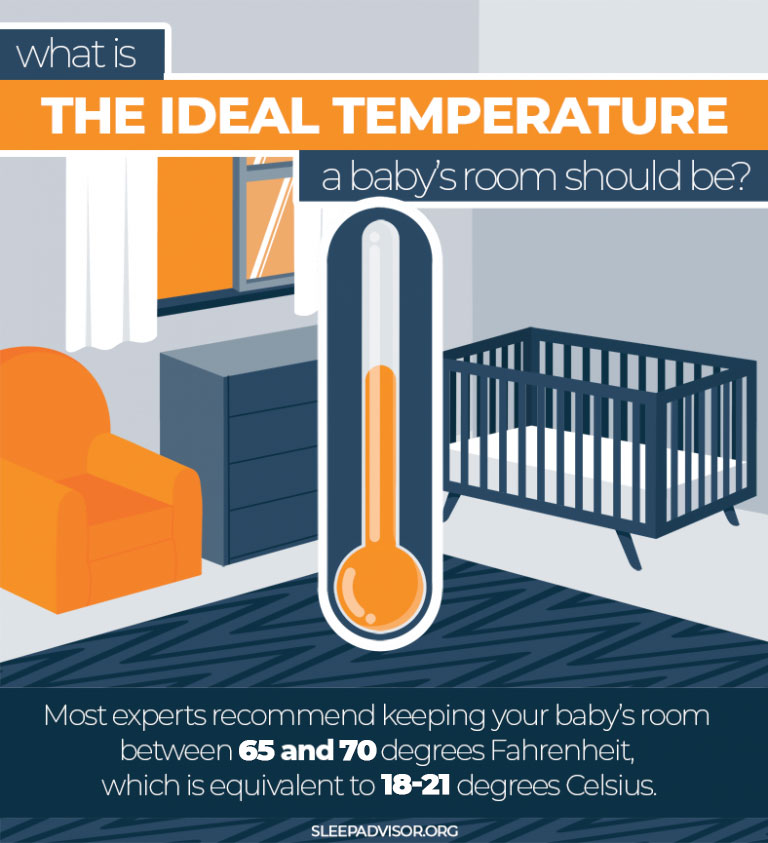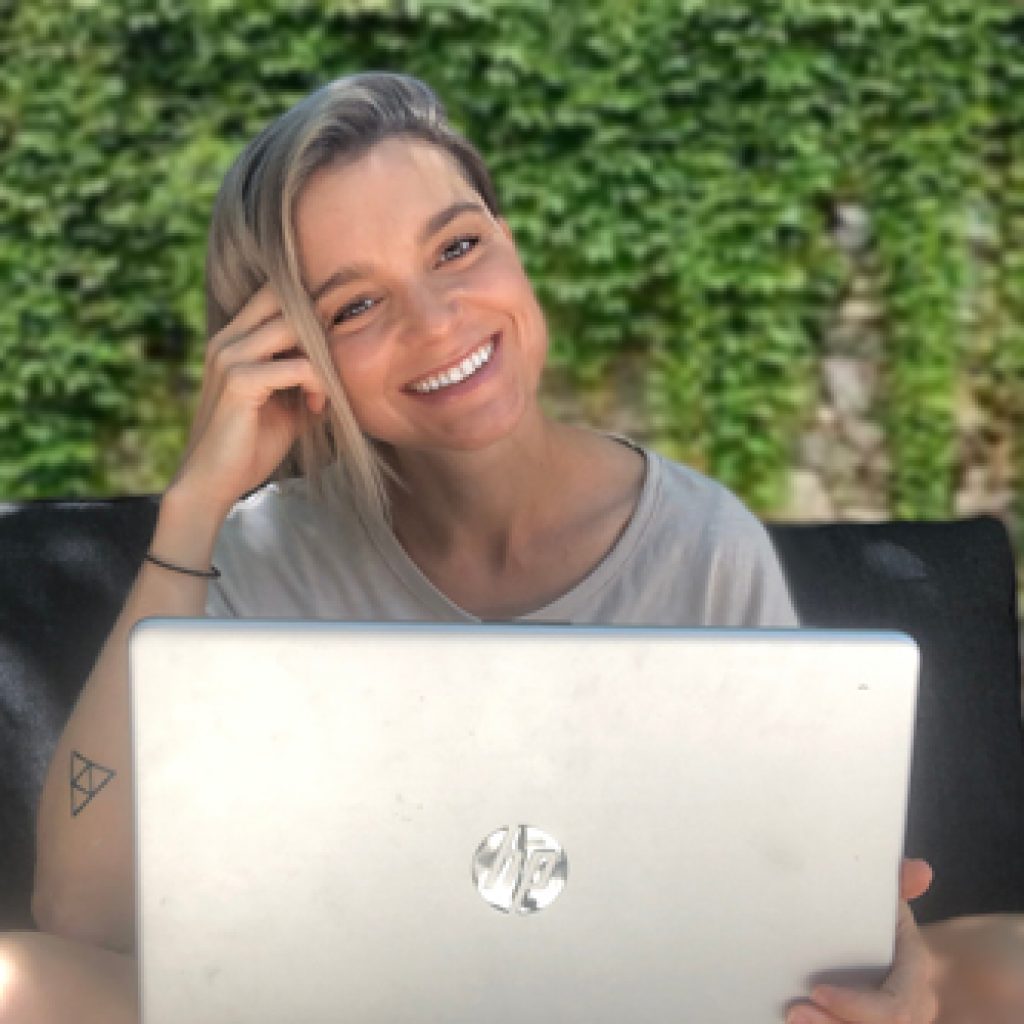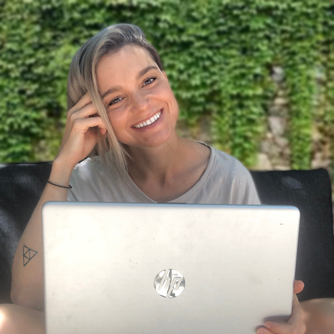Since babies can’t communicate that they’re too hot or too cold, it’s up to their caregivers to make sure they are comfortable and safe.
Some new parents may believe that the more bundled, the better, but often the opposite is true. In fact, the risk of sudden infant death syndrome (SIDS) can increase when a baby is too hot1 or too bundled up.
There are other safety and comfort concerns to consider when finding the optimal temperature for your baby’s room, so in this article, we’ll share expert tips and science-backed research to help you find that perfect temperature.
Best Room Temperature for Babies
According to Cleveland Clinic2, babies should sleep in rooms between 65 and 70 degrees Fahrenheit, which is equivalent to 18-21 degrees Celsius. If you sleep in the same room as your baby, this can work out well for both of you since the recommended sleeping temperature for adults is between 60 and 67 degrees Fahrenheit.2 A good compromise might be setting the thermostat to about 67 degrees Fahrenheit.
If the bedroom your baby sleeps in doesn’t have a thermostat, you can use a portable indoor thermometer to keep track of how warm or cool the room is.
In general, babies and toddlers adjust to the room temperature3, just like adults do, but they lose heat more rapidly. This quick heat loss is especially true of newborn, premature, and low-birth-weight babies.3 This means, that if you feel cold in a room, your newborn will likely feel even colder and will need an extra layer.

Oftentimes, caregivers first check a baby’s hands and feet to gauge their temperature, however, this isn’t always the most accurate means of assessment.
Instead, try placing your hands on their head or stomach to see if they feel warm. In this case, you’re checking to see if your baby feels warm, rather than if they have a fever due to illness. Feeling overheated and having a fever aren’t the same4.
Some signs your infant is feeling overheated include extreme fatigue or drowsiness, a flushed face, heat rash, disinterest in eating or drinking, or sweating5.
Additionally, your child may seem extra fussy6 even if they’ve eaten and there are no required diaper changes. They may just feel uncomfortably hot and need your help cooling off.
Avoid Over-Bundling
According to the American Academy of Pediatrics, over-bundling, overdressing, or covering your infant’s face or head can increase their risk of sudden infant death syndrome.3
SIDS7 can result from suffocation, which is why it is recommended that you don’t leave extra blankets or toys in a new baby’s bed, and it can also result from being overheated. So instead of bundling your baby like a burrito, consider a lightweight sleep sack to keep them cozy, and when the weather is cold, dress them in warmer layers of clothing, rather than wrapping them in blankets.7
If your baby is sick, opt for fewer rather than more layers8 since their body temperature is already elevated, and they need to be able to cool off slightly rather than raise their temperature further.
Keep Cribs Bare
Avoid cluttering your baby’s crib with pillows, toys, and stuffed animals. The American Academy of Pediatrics recommends waiting for at least one year9 before adding these items to your baby’s bed to help reduce the risk of SIDS. If your baby is too cold in chilly climates and colder seasons, you can dress them in warmer layers or opt for a thicker sleep sack designed for cooler temperatures.
Related: Best Crib Mattress
Use a Fan
While a fan won’t dramatically decrease the temperature in the room, it does circulate oxygen. A fan can also freshen up the air in the room, allowing your toddler to get better airflow rather than rebreathing stagnant air.
According to Nationwide Children’s Hospital10, running a fan in an infant’s room at night can lower their risk for SIDS by up to 72 percent.
View Our Full Guide: Best Fans for Sleeping
Share a Room
The American Academy of Pediatrics (AAP)11 recommends sharing a room with your infant during their first six months of life to reduce their chance of SIDS. This also allows you to closely monitor your infant’s temperature and get a better idea of whether they sleep hot or “normal.”
To facilitate this co-sleeping arrangement, consider moving the crib or bassinet into your bedroom and placing it near your bed.
Learn More: Safe Co-Sleeping Guidelines
Back Sleeping
While tummy time12 is crucial for development, the AAP suggests that you always place your baby on their back before bed to reduce SIDS and allow air circulation around their face.11
Avoid Direct Heat and Cold Sources
Be sure you’re placing your baby’s crib away from direct heat and cold sources like the radiator, heater, an open window, or the air conditioning vent. These can all easily make your baby too hot or too cold. For that matter, your baby should never sleep with something like an electric blanket or hot water bottle, as they raise the risk for SIDS as both potential suffocation threats and can raise your baby’s core temperature far too high.11
How to Check if Your Baby Is Too Cold
We’ve talked a lot about a baby being too hot, but so far, we haven’t talked much about them being too cold.
When an infant feels chilly, the first thing you may notice is that their hands and feet begin to turn slightly blue13. While this may be cause for alarm in kids and adults, it’s nothing to be overly concerned about when you observe it in an infant.
Once you warm an infant slightly and their body returns to a normal temperature, you should see that their extremities return to a healthy hue.
We recommend dressing babies in layers but don’t overdo it. Again, if you notice that your baby is sweating, flushed, or has damp hair, that likely means they’re too hot. Remove some of the layers and check back in.
If your baby is too cold, you can add a layer of clothing or a pair of socks. Again, add a single layer at a time and continually assess rather than taking everything off or over-bundling.
View Our Full Guide: How To Dress Baby For Sleep
Summer vs. Winter Temps
How can I adjust the room temperature in summer?
If you have the luxury of indoor air conditioning and a thermostat, you can simply set the display to your desired temperature.
If you can’t control the sleeping environment directly, you’ll have to be more creative. A fan can help slightly, but it will mostly circulate the air rather than dramatically cool it. To avoid the room getting too hot in the first place, make sure you keep your blinds closed, or perhaps even use blackout curtains, during the day.
Additionally, opening a door or window at night can increase airflow. In fact, leaving the doors and windows open has been shown to improve sleep quality14 by lowering the carbon dioxide levels in the room.
If the room is warm, be sure you’re using lightweight bedding and dressing your infant in lightweight clothes. .
How can I adjust the room temperature in winter?
As mentioned, the ideal bedroom temperature for babies is between 65 and 70 degrees Fahrenheit, regardless of the season.2
You can also add layers when dressing your baby for sleep but do so with caution. Remember, you should avoid over-bundling, overdressing, or covering your infant’s face or head, which might overheat them and increase their risk of SIDS. Babies under one year old shouldn’t be left in a crib with extra blankets, pillows, or toys.11
If your thermostat is kept within the 65 to 70-degree range in the winter, though, you shouldn’t need to worry about bundling up your baby indoors.
Read More: How To Dress Your Baby For Sleeping In a 70-Degree Room
Frequently Asked Questions
What type of bedding is best for my baby?
According to the American Academy of Pediatrics, until your baby is about one year old, they shouldn’t have any bedding in their crib to help reduce their risk of SIDS.9
Instead, you can use a sleep sack or warm sleep clothing for your younger infant, and be sure to place them on their back on a firm crib mattress. Avoid all soft bedding, pillows, and toys until your baby is at least one year old and more mobile. Items like duvets and quilts should be avoided until your infant graduates to a toddler or child’s bed.
What room temperature is too cold for a newborn?
According to the Cleveland Clinic, anything below about 65 degrees is likely too cold for a baby.2 As a general rule, just remember, if you feel too cold in the room, your baby probably does too.
How do I know if my newborn is cold?
If your baby is too cold, one of the first things you might notice is that their hands and feet have turned slightly blue.13 This is especially true for younger infants and newborns, as their blood is still newly circulating to these parts, and is not generally a sign of a problem.
We advise dressing your baby in another layer of clothing and adding some socks if they’re feeling chilly. Once they’re feeling a bit warmer, their hands and feet should return to their normal color.
What should the house temperature be for a newborn?
Doctors at UT Southwestern Medical Center emphasize the importance of keeping a newborn baby’s body temperature between 96.8 and 99.5 degrees Fahrenheit14 shortly after delivery. In order to do so, they keep patients’ rooms at 73 degrees Fahrenheit.
If you’re just taking your newborn home, keeping the house at about 73 degrees should be a good temperature to neither overheat nor overcool your new baby.
Conclusion
As you can see, making sure your baby sleeps at the right temperature is not only important for their comfort but also for their safety. Adjusting your baby’s temperature is usually a simple matter of adding or removing layers and making sure the room has good airflow and stays at a comfortable temperature.
The Advisor Says
We also recommend consulting your child’s own doctor for additional guidance on safe sleeping. They can be a fantastic resource for new parents navigating their infant’s sleep health.

Natalie Grigson
Writer
About Author
Natalie is a content writer for Sleep Advisor with a deep passion for all things health and a fascination with the mysterious activity that is sleep. Outside of writing about sleep, she is a bestselling author, improviser, and creative writing teacher based out of Austin.
Side Sleeper
References:
- “SIDS and keeping your baby safe”. Children’s Health. Webpage accessed April 3, 2024.
- “What’s the Best Temperature for Sleep?”. Cleveland Clinic. 2021.
- “Keeping Your Baby Warm”. Johns Hopkins Medicine. Webpage accessed July 27, 2023.
- “How to distinguish between fever caused by infection, and environment and or exercise-induced hyperthermia and heat illness?”. Global Heat Health Information Network. Last modified May 22, 2020.
- “Keeping your baby safe and cool in summer”. Children’s Health. Webpage accessed July 27, 2023.
- Shannon-Karasik, Caroline. “How Do You Know If Your Baby Is Too Hot? Here’s What To Look For”. MemorialCare. Webpage accessed July 27, 2023.
- “Sudden infant death syndrome (SIDS)”. Mayo Clinic. Last modified July 19, 2023.
- Thebarge, Sarah. “When and how to treat a high baby fever”. GoHealth Urgent Care. Webpage accessed July 27, 2023.
- “Tips for Keeping Infants Safe During Sleep From the American Academy of Pediatrics”. American Academy of Pediatrics. 2020.
- “Sleeptime: Increase Air Circulation to Lower SIDS Risk”. Nationwide Children’s Hospital. Webpage accessed July 27, 2023.
- Moon MD, Rachel Y., et al. “SIDS and Other Sleep-Related Infant Deaths: Updated 2016 Recommendations for a Safe Infant Sleeping Environment”. American Academy of Pediatrics. 2016.
- “Benefits of ‘Tummy Time’ and How To Do It Safely”. Cleveland Clinic. 2022.
- “Acrocyanosis”. ScienceDirect. Webpage accessed July 27, 2023.
- Ennis, Becky. “Not too hot, not too cold: Keeping newborns at just the right temperature”. UTSouthwestern Medical Center. 2023.
